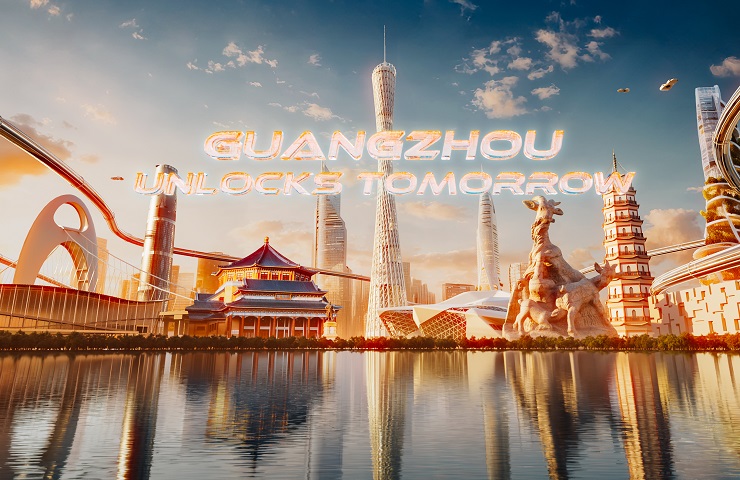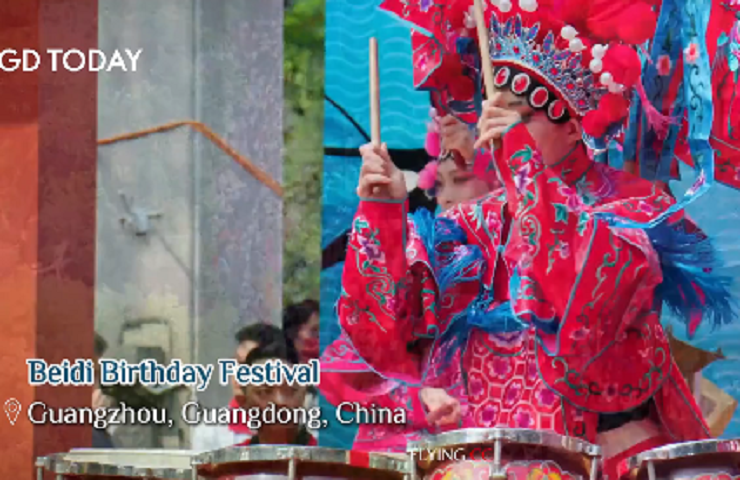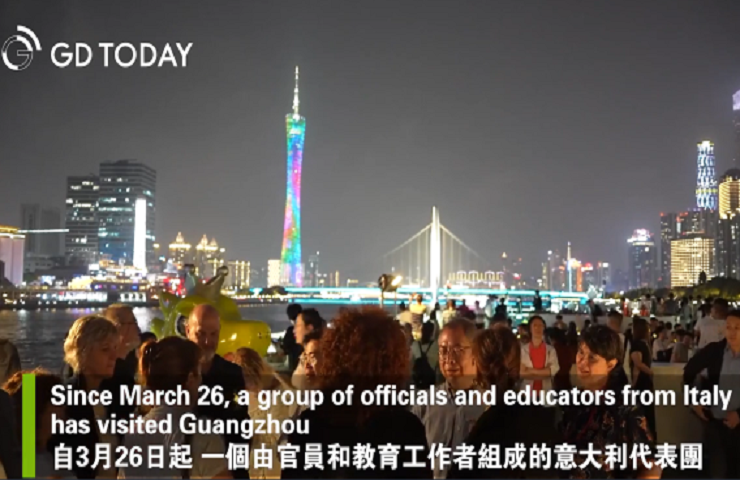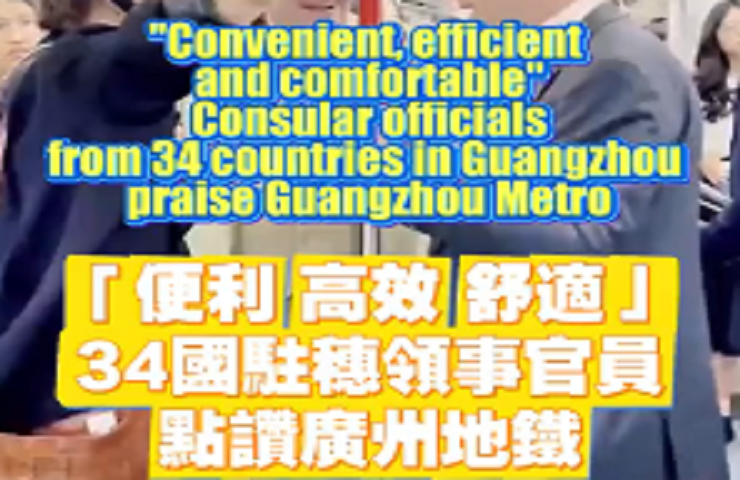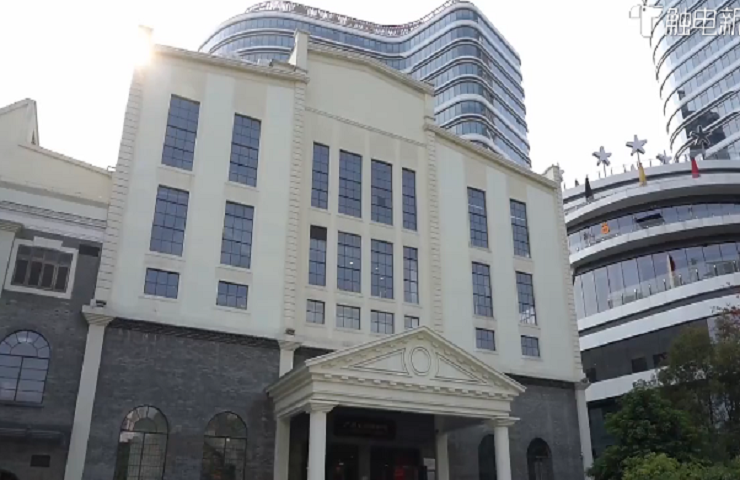New bridge set to energize Bay Area
The 55-kilometer Hong Kong-Zhuhai-Macao Bridge, scheduled to open for traffic on Wednesday, will provide a crucial boost to the development of the Guangdong-Hong Kong-Macao Greater Bay Area, analysts said.
As the first road link to span the Pearl River Estuary, the bridge and tunnel will energize the regional economy and integrate cities from both sides of the estuary into one dynamic community.
The Bay Area, in the Pearl River Delta, encompasses nine cities in Guangdong province plus the two special administrative regions of Hong Kong and Macao.
Last year, the total GDP of those 11 cities reached 11.7 trillion yuan ($1.69 trillion). That means 5 percent of the nation's population contributed over 14 percent of country's GDP in 2017.
Like the San Francisco Bay Area in the United States, the strategy behind the development of the Bay Area in China was to merge the 11 cities into a world-class city cluster, able to compete on a global scale.
"The HZMB is one of the most important elements of the development of the Bay Area," said Jason Ni Mengcheng, an assistant professor in the Department of Architecture and Civil Engineering at City University of Hong Kong. Ni specializes in research into large transportation infrastructure.
The bridge, he said, will redistribute resources in the Bay Area and generate a significant impact on regional development.
Noting that the HZMB will be open 24 hours a day, Ni said the structure, for the first time, will provide an unstoppable transportation channel between east and west across the Pearl River Estuary.
Although ferry services run throughout the day, their frequency is reduced substantially after midnight, Ni said. Thus, the operation of the HZMB will significantly increase the flow of people and goods across the estuary.
Ni also noted that the bridge will encourage more Hong Kong people to visit Macao. This will promote communication and exchanges of professional services between the two SARs. He predicted it will help diversify Macao's economy, which is heavily reliant on tourism and the gaming industry.
Construction of the HZMB, the world's longest sea-spanning structure, began at the end of 2009.
Once operational, the bridge will cut the travel time between Hong Kong and Zhuhai or Macao from four hours by car to less than 60 minutes.
Antony Leung Kam-chung, Hong Kong's former financial secretary from 2001 to 2003, participated in the SAR government's initiative to build a bridge connector prior to 2003.
A study of the Pearl River Delta at that time showed that foreign and Hong Kong investors would be most attracted to locales within three hours of Hong Kong, Leung said.
Development still lags in places like Zhuhai and Jiangmen, which are farther away, on the western side of the delta, he continued.
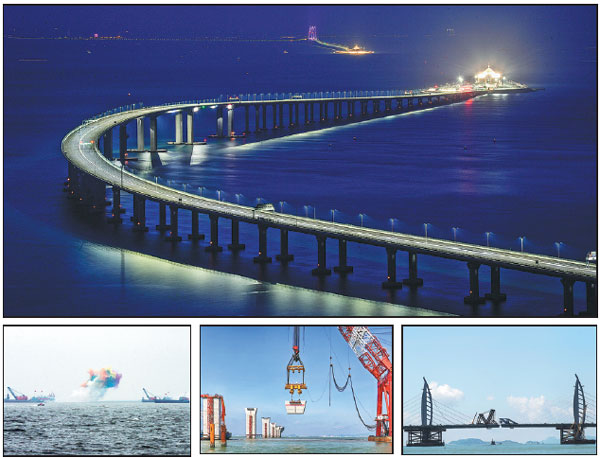
The Hong Kong-Zhuhai-Macao Bridge and tunnel (top) seen on Sunday, as final preparations were made for its opening on Wednesday. A ceremony with fireworks marked the start of construction in 2009(above, from left); all supports were completed in 2015, and its two sections were joined in 2016. Photos by Vincent Chan, Chen Lin, Zhong Fan for China Daily / Xinhua
Once the bridge opens, and with the Guangzhou-Shenzhen-Hong Kong Express Rail Link now operational, he predicted more investment will flow westward as far as the Guangxi Zhuang autonomous region.
Lin Ming, chief engineer of the bridge's island and tunnel project, said the HZMB will create more urban areas in the Bay Area, given that urbanization is stimulated in coastal regions.
"The delta in Guangdong is a perfect site for metropolises," Lin said. "Sustainable development in the delta requires more transportation infrastructure - the more, the better."
The HZMB also will serve as an example for future cross-border cooperation under the "one country, two systems" principle. The project was a cross-border effort, shared by the governments of Guangdong, Hong Kong and Macao.
Su Yi, head of the Working Group on Cross-boundary Policy Research for bridge operator HZMB Authority, said the cooperation and coordination among the three governments opened a door for institutions under different political systems and cultures to conduct more exchanges.
It has laid a foundation for the three administrations to have more cooperation in the future development of the Bay Area, he said.
Better communication within the Bay Area will start with the easier flow of capital trading and the innovation of policies, Su said. But ultimately, it's about the connection between people from different backgrounds, he said.
Gavan Ord, manager of business and investment policy for CPA Australia, a global accounting body, said that it helps change people's mindsets in terms of business activities with Macao, Zhuhai and other cities on the western coast of the estuary.
"With the opening of the HZMB, you feel that you are closer to the other side of the ocean, and it helps integrate separate communities into one," Ord said.
Copyright © Foreign Affairs Office of Guangzhou Municipal Government,
Hong Kong and Macao Affairs Office of Guangzhou Municipal Government All rights reserved.
Presented by China Daily.
京ICP备13028878号-28





